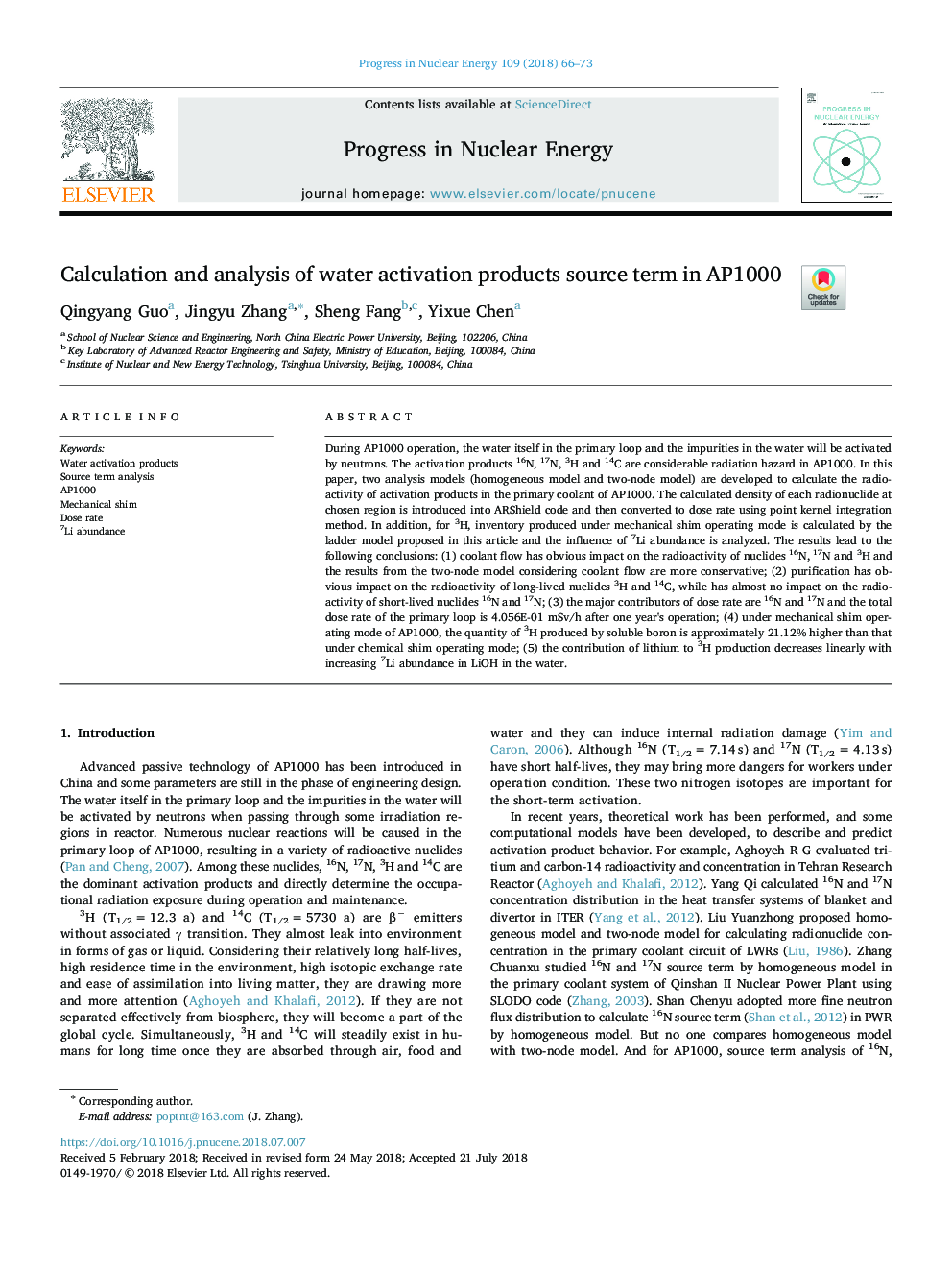| Article ID | Journal | Published Year | Pages | File Type |
|---|---|---|---|---|
| 8084041 | Progress in Nuclear Energy | 2018 | 8 Pages |
Abstract
During AP1000 operation, the water itself in the primary loop and the impurities in the water will be activated by neutrons. The activation products 16N, 17N, 3H and 14C are considerable radiation hazard in AP1000. In this paper, two analysis models (homogeneous model and two-node model) are developed to calculate the radioactivity of activation products in the primary coolant of AP1000. The calculated density of each radionuclide at chosen region is introduced into ARShield code and then converted to dose rate using point kernel integration method. In addition, for 3H, inventory produced under mechanical shim operating mode is calculated by the ladder model proposed in this article and the influence of 7Li abundance is analyzed. The results lead to the following conclusions: (1) coolant flow has obvious impact on the radioactivity of nuclides 16N, 17N and 3H and the results from the two-node model considering coolant flow are more conservative; (2) purification has obvious impact on the radioactivity of long-lived nuclides 3H and 14C, while has almost no impact on the radioactivity of short-lived nuclides 16N and 17N; (3) the major contributors of dose rate are 16N and 17N and the total dose rate of the primary loop is 4.056E-01 mSv/h after one year's operation; (4) under mechanical shim operating mode of AP1000, the quantity of 3H produced by soluble boron is approximately 21.12% higher than that under chemical shim operating mode; (5) the contribution of lithium to 3H production decreases linearly with increasing 7Li abundance in LiOH in the water.
Related Topics
Physical Sciences and Engineering
Energy
Energy Engineering and Power Technology
Authors
Qingyang Guo, Jingyu Zhang, Sheng Fang, Yixue Chen,
